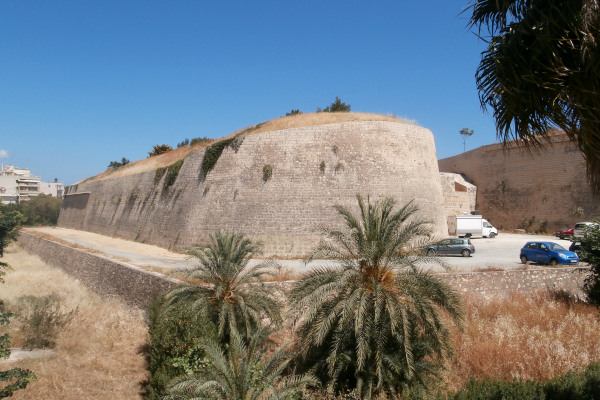The imposing fortification of Heraklion from the Venetian period started being built in 1462 and the construction lasted until the time of the conquest of the city by the Ottomans. Today the walls are considered to be the best-preserved defensive construction in all Mediterranean.
It was the most complete defensive cluster since Venetians applied all their knowledge in fortification and made a masterpiece. The walls were so strong that were intact even after twenty years of siege by the army of the Ottoman Empire. In fact, the city wouldn’t have fallen without the treason of A. Barozzi, which led to the surrendering of the city.
The current form of the walls is a result of an innovative design of the Venetian architects and mechanics of the 16th century since they wanted to incorporate firearms and canons in the walls. The outside part has 7 kilometers long triangular shape, and the base of the triangle looks at the sea, being in fact a bulwark.
A large amount of soil was excavated in order for the wall to be very high and the soil was used to create a tall embankment. It was also enforced with limestone. The wall was built this way in order to minimize the impact of bombs and to have greater static efficiency. Unfortunately, the soil at the time wasn't pressed enough and now there are many static problems.
The big innovation of the wall of Hantakas is a large number of bastions and smaller bastions which were covering the land. The main bastions were seven, they had names (Sabbionera, Vitturi, Jesus, Martinengo, Vethleem, Pantokratora, and Agios Andreas) while they had a shape of a heart. Every bastion was connected with the wall with a passageway, on which there were cannons, both to defend the city and to attack ships that were approaching.
The entrances of the walls were covered and protected by the bastions since entrances are always the weakest part of every defensive wall. The heart shape offered a greater resistance if it was bombed and also made very difficult the attacks of the enemy army. The construction of the walls, their shape, and the trench were designed in a way making the enemy gather in places, so attacking them from the walls would be even easier.
